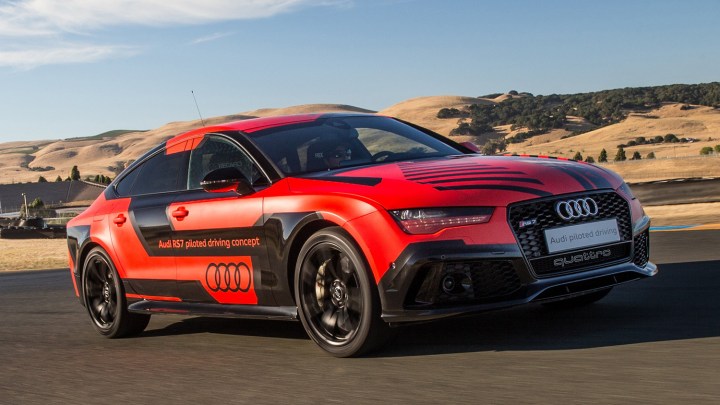
Working with researchers from the Electronics Research Lab in Belmont, California, Audi says its engineers will use the track to “study how self-driving vehicles perform at the limits of speed.” It believes this will provide useful insight for calibrating software that will allow future production cars to “handle sudden and extreme conditions.”
Using a racetrack as a testing ground is wholly appropriate given Audi’s approach to autonomous-car research so far. It built two autonomous RS 7 prototypes named “Robby” and “Bobby,” after the legendary Unser family of racing drivers. It then set them loose on racetracks around the world, including Germany’s Hockenheimring, Spain’s FAST Parcmotor, and another California track, Sonoma Raceway.
Before that, Audi sent an autonomous TT sports car up the infamous Pikes Peak International Hill Climb course. It also built a less aggressive autonomous prototype based on the A7 that drove from California to CES last year with minimal human assistance.
Carmakers usually tout track testing as proof they’ve built a vehicle that is satisfying to drive, so why bother when a human isn’t taking the wheel? Audi’s reasoning is that if a self-driving car can handle at-the-limit driving on a track, it can probably handle the average commute. Plus, robot cars turning in hot laps makes for great publicity.
All of the track time will go towards development of a somewhat more staid production car. Audi plans to make autonomous-driving tech available in the next-generation A8 sedan. Initially, the system will be limited to stop-and-go traffic and highway driving, and Audi says it will be capable of operating at speeds up to 60 kph (37.3 mph).
Editors' Recommendations
- Audi Q6 e-tron ushers in the automaker’s next EV phase
- Beleaguered robotaxi startup Cruise lays off quarter of workforce
- Cruise’s robotaxi service suspended by California regulator
- Waymo expands robotaxi service area in San Francisco
- Cruise autonomous vehicle drives over woman just after she was hit by another car

